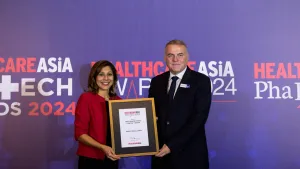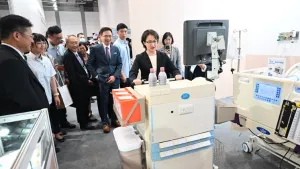
India spurs healthcare digitalisation with Ayushman Bharat Digital Mission
Experts see great promise in the mission’s aim to improve citizens’ access to healthcare services.
WITH the Union Health Ministry allocating $1.09t (Rs 90,658.63 crore) in the interim Budget for 2024-2025, India has highlighted its focus on enhancing healthcare. In line with this is the launch of the Ayushman Bharat Digital Mission (ABDM) to further transform the sector.
The Ayushman Bharat scheme provides financial assistance to 100 million underprivileged families for secondary and tertiary-level hospitalisation costs. With the ABDM’s launch, India will commit towards healthcare digitalisation in both the public and private sectors.
KPMG reported that the ABDM’s initiative is to drive the development of a backbone to support the integrated digital health infrastructure in India.
“It will bridge the existing gap amongst different stakeholders of the healthcare ecosystem through digital highways and bring all stakeholders on to a more efficient system,” said Lalit Mistry, partner and co-head of the healthcare sector at KPMG India and one of the principal authors of the report.
Meanwhile, a report from Bain & Company mentioned that the Ayushman Bharat PM-JAY scheme may lead to an increase in the country’s healthcare expenditure per capita.
In 2023, India’s hospital market was valued at almost $99b and is projected to reach $193.6b at a compound annual growth rate (CAGR) of 8%.
“Through its plans for a United Health Interface (UHI), digital registries, and electronic health records (EHR), the Ayushman Bharat Digital Mission (ABDM) could provide an impetus to the digitisation of health,” said Parijat Ghosh, India managing partner at Bain & Company and one of the report’s lead authors.
Strengthening digitalisation incentives
Amidst India’s efforts towards transforming its healthcare landscape, ABDM must learn how to support thousands of providers’ digitisation and integration efforts.
Such efforts span hospitals, laboratories, GP clinics, and more across private and public healthcare sectors.
“The success of ABDM will depend on the ability to onboard a vast number of public and private health providers to adopt digital health solutions and standards to build a digital health ecosystem” Mistry said.
Moreover, he reiterated that a well-thought roadmap must be utilised in providing technical and financial incentivisation to small and larger providers.
“The capital and operational expenses could be factored in as a subsidy or indirect tax incentives for the providers leveraging the transformation journey” Mistry added.
Health IUD innovation
Meanwhile, adopting health IDs can potentially transform public health research and care provision in India.
Currently, health UIDs serve as databases linked with personal health records, lacking features to incentivise citizens and providers to utilise them effectively, according to KPMG.
In Bain’s “Frontline of Healthcare” survey, digital health application usage in India grew between 20% to 100% due to the pandemic, with consumers expecting this to increase by 5% to 10% annually.
In addition, the report mentioned that 70% of 250 Indian respondents expected convenience and quality care to proactively manage their health.
“Health UID issued as virtual health cards could act like an ATM card preloaded with healthcare benefits,” Mistry said.
Such healthcare benefits include entitlement to health schemes, medical emergency coverage, primary care benefits, pharmacy coupons, and health check-ups amongst others.
Strengthened financing
In line with digitalisation, a strong healthcare system requires setting investing as a priority to foster productivity, employment, foreign exchange earnings, and innovation.
“For the healthcare sector, innovative and blended finance has the potential to play an instrumental role in the way we solve society’s greatest health challenges,” Mistry said.
He also emphasised that a government-led systematic effort, along with private and other financing sources is crucial in creating and adopting innovative financing models.
Moreover, Ghosh highlighted other government initiatives that could spur the sector’s growth and advancement.
“Production-linked incentives (PLI), foreign direct investment (FDI), the creation of bulk drug parks, and the Policy on R&D and Innovation in Pharma-Medtech (PRIP) could further spur innovation and growth in India’s medtech and pharma services sectors,” Ghosh said.


















 Advertise
Advertise


